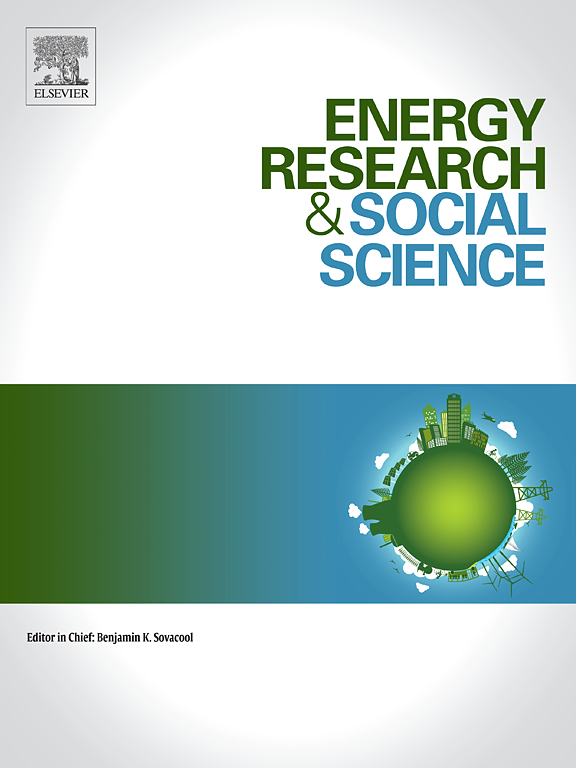Integrating cultural and spiritual restoration into mine closure: The case of wayside shrines and crosses
IF 7.4
2区 经济学
Q1 ENVIRONMENTAL STUDIES
引用次数: 0
Abstract
As the energy transition accelerates, coal regions face increasing pressure to phase out and adopt new development pathways. The success of these transitions depends not only on economic and environmental transformation but also on the recovery of culturally significant places. This study explores cultural and spiritual restoration as part of mine closure planning to foster cultural continuity and strengthen local identity. Focusing on the Most region in the Czech Republic, a historically significant coal and energy production area, the study maps and documents wayside shrines and crosses that have been preserved, demolished, or relocated due to mining. Through a combination of GIS mapping, archival and museum research, field surveys, and stakeholder consultations, 162 such objects were identified, revealing patterns of displacement and grassroots heritage preservation. The findings highlight the need for mine closure strategies to incorporate the recovery of cultural heritage alongside environmental rehabilitation. Restoring or symbolically reinterpreting lost landmarks can foster a sense of place and social cohesion. Beyond cultural preservation, these sites can evolve into hubs for cultural exchange, education, and local entrepreneurship, supporting broader economic and social regeneration. This study advocates for a more holistic approach to mine closure planning as an integral part of a just transition toward new energy pathways. One that integrates participatory GIS, community-led heritage initiatives, and adaptive reuse of cultural elements. By transforming places of loss into symbols of resilience and renewal, communities can reconnect to post-mining landscapes, ensuring they remain culturally vibrant and socially meaningful.
将文化与精神的修复融入矿井关闭:路边神龛与十字架的案例
随着能源转型的加速,煤炭地区面临着逐步淘汰和走新发展道路的压力越来越大。这些转型的成功不仅取决于经济和环境的转型,还取决于具有重要文化意义的地方的恢复。本研究探讨了文化和精神的恢复作为关闭矿山计划的一部分,以促进文化的连续性和加强地方认同。该研究集中在捷克共和国的Most地区,这是一个历史上重要的煤炭和能源生产区,研究地图和记录了路边的神社和十字架,这些神社和十字架因采矿而被保存、拆除或搬迁。通过GIS制图、档案和博物馆研究、实地调查和利益相关者咨询的结合,确定了162个这样的对象,揭示了流离失所和基层遗产保护的模式。调查结果突出表明,需要制定关闭矿山的战略,将文化遗产的恢复与环境的恢复结合起来。恢复或象征性地重新解释失去的地标可以培养地方感和社会凝聚力。除了文化保护之外,这些遗址还可以发展成为文化交流、教育和地方创业的中心,支持更广泛的经济和社会复兴。这项研究提倡采用更全面的方法来进行矿山关闭规划,作为向新能源途径过渡的一个组成部分。它整合了参与式地理信息系统、社区主导的遗产倡议和文化元素的适应性再利用。通过将失去的地方转变为恢复和复兴的象征,社区可以重新连接到采矿后的景观,确保它们保持文化活力和社会意义。
本文章由计算机程序翻译,如有差异,请以英文原文为准。
求助全文
约1分钟内获得全文
求助全文
来源期刊

Energy Research & Social Science
ENVIRONMENTAL STUDIES-
CiteScore
14.00
自引率
16.40%
发文量
441
审稿时长
55 days
期刊介绍:
Energy Research & Social Science (ERSS) is a peer-reviewed international journal that publishes original research and review articles examining the relationship between energy systems and society. ERSS covers a range of topics revolving around the intersection of energy technologies, fuels, and resources on one side and social processes and influences - including communities of energy users, people affected by energy production, social institutions, customs, traditions, behaviors, and policies - on the other. Put another way, ERSS investigates the social system surrounding energy technology and hardware. ERSS is relevant for energy practitioners, researchers interested in the social aspects of energy production or use, and policymakers.
Energy Research & Social Science (ERSS) provides an interdisciplinary forum to discuss how social and technical issues related to energy production and consumption interact. Energy production, distribution, and consumption all have both technical and human components, and the latter involves the human causes and consequences of energy-related activities and processes as well as social structures that shape how people interact with energy systems. Energy analysis, therefore, needs to look beyond the dimensions of technology and economics to include these social and human elements.
 求助内容:
求助内容: 应助结果提醒方式:
应助结果提醒方式:


